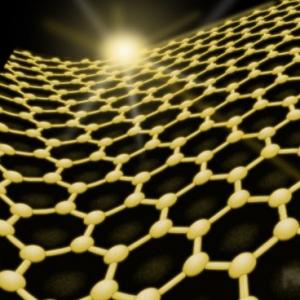Robot demonstrates photothermal energy conversion by graphene oxide based actuators
Researchers from the University of Science and Technology of China developed a new robot that's made by layering a polyethylene film onto a glass layer and an adding a layer of graphene that is used to convert photothermal energy from infra red light. The robot can pick, move and drop objects. Such a design may be useful for surgery, for example. It can also inspire the design of transparent artificial muscles.

The team prepared the actuator by layering a polyethylene film onto a glass layer. On top of this, they added a graphene layer, which can absorb infrared light and convert this energy into heat with a high efficiency. The graphene - a sheet of carbon atoms one atom thick - also combines high transparency with strong mechanical performance. A strip of graphene on polyethylene that was 3mm by 12mm was then cut out and peeled off the glass, after which the strip curled up.




